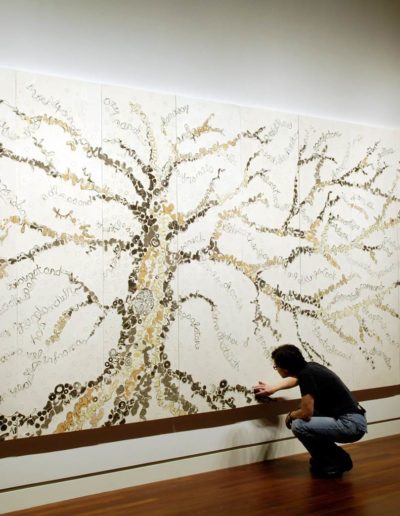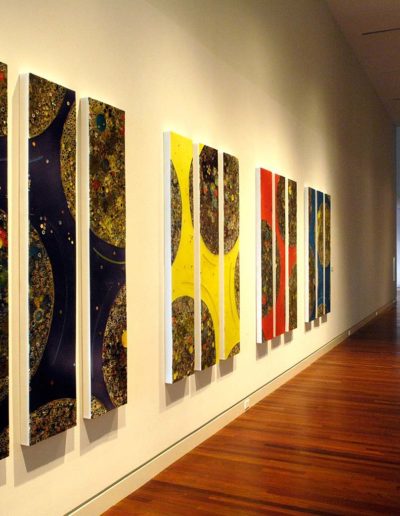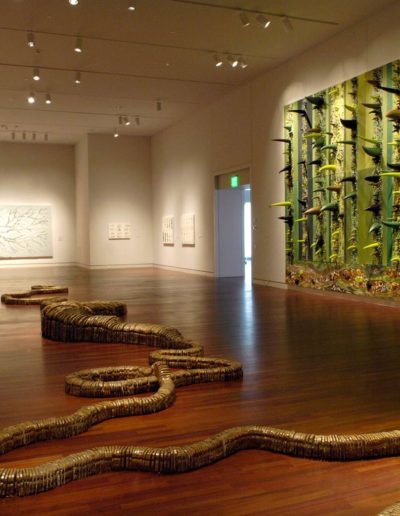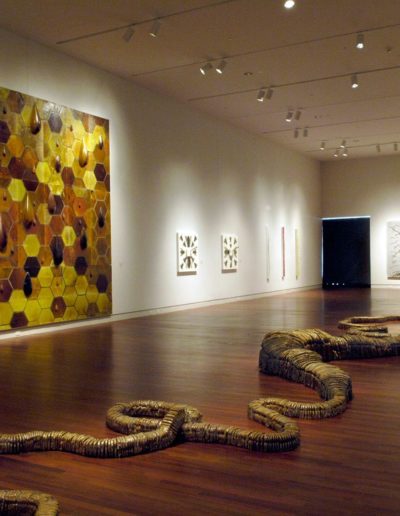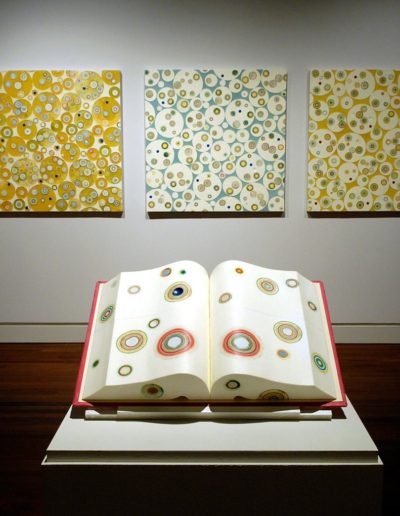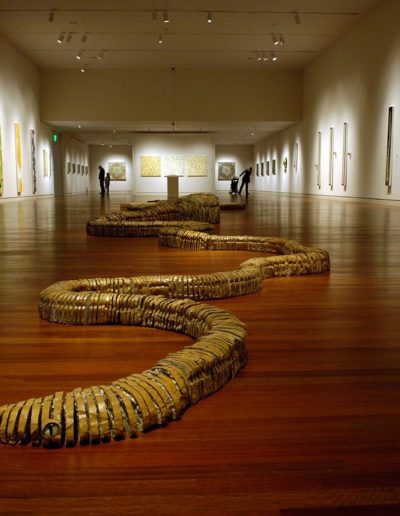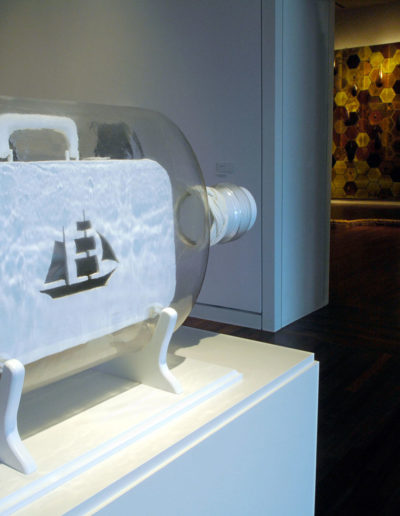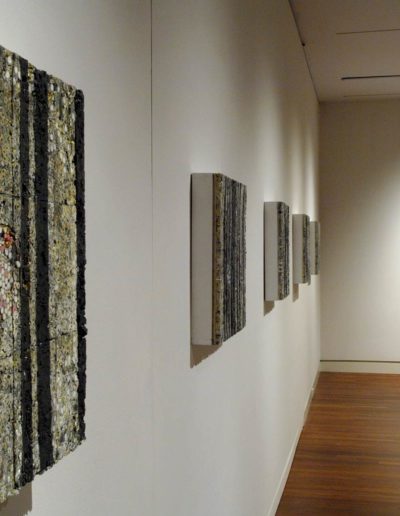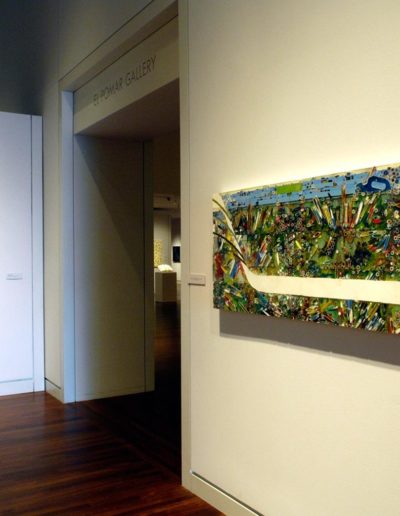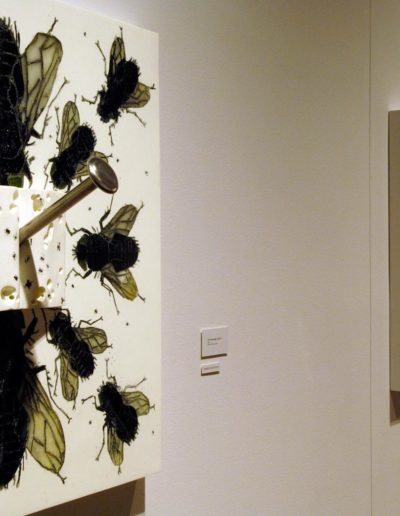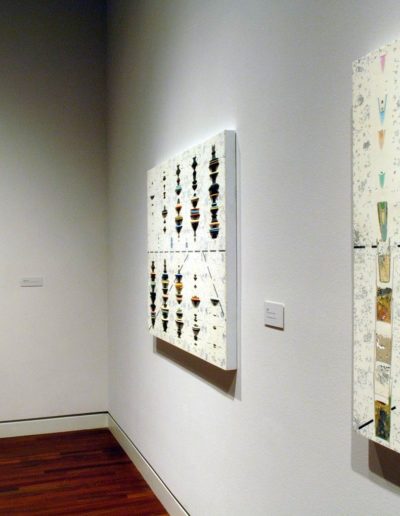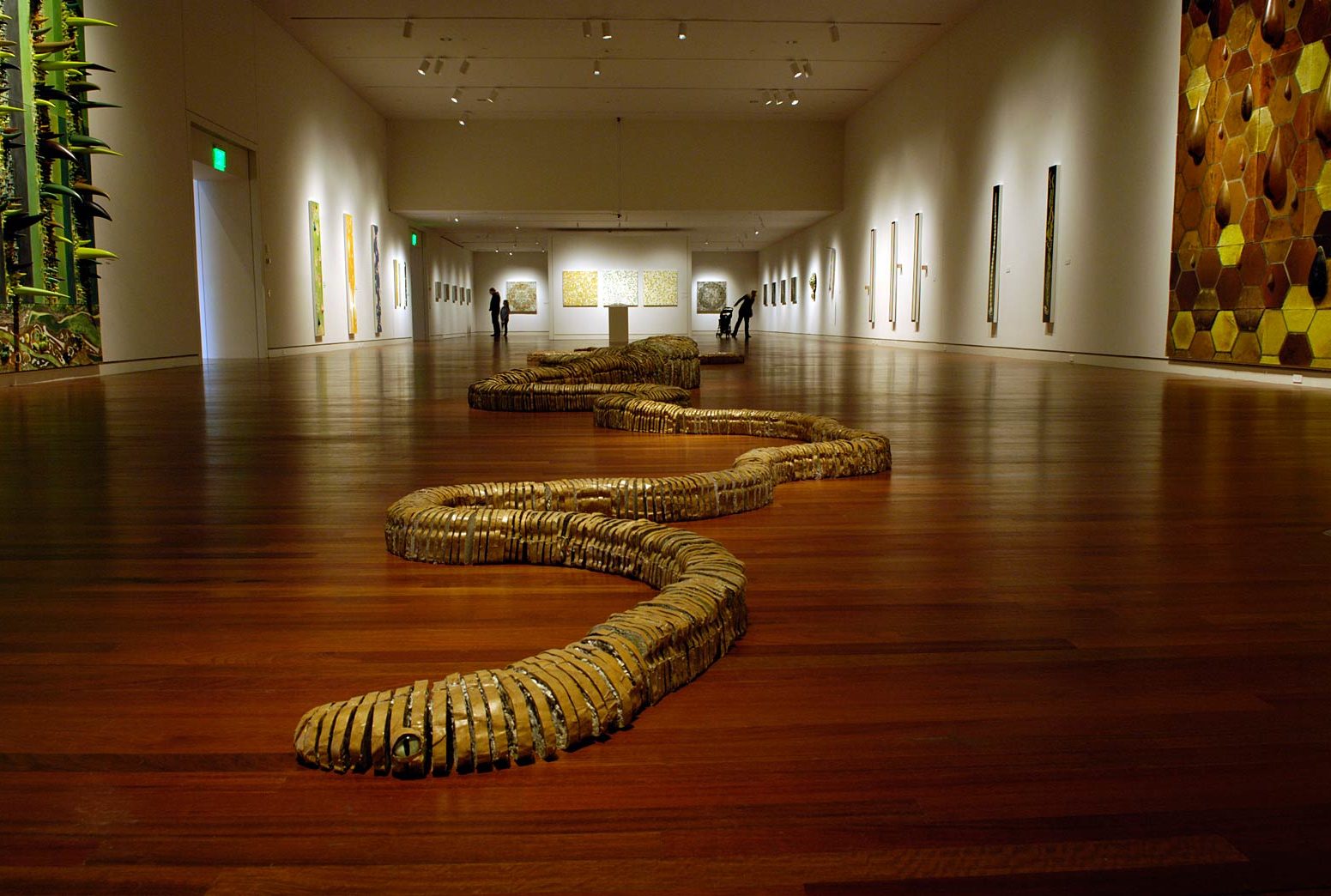
Reckoning
Colorado Springs Fine Art Center and Museum, February-June 2012
This book and the exhibition it accompanies are titled Reckoning. A reckoning suggests the weight of inevitability. For some, there are revelatory religious connotations to the term; for others the worldly consequences of everyday choices. For Terry Maker, it is both. While Reckoning does not immediately suggest the beauty, grace, humor, and skill apparent in Maker’s art it does address the profound uncertainty, contradiction, and process that is found between now and our inevitable worldly end. Maker’s art is fun to look at, but its layers run deep. Implicit in Maker’s art is us: we are graceful and violent; we are spiritual and materialistic; we are essence and excess; we are of nature and industry; we are present and absent; we are sensual and dangerous; we are transitory and, just perhaps, eternal. If the subjects of Maker’s art appear as contradictions, then it is perhaps in this way that the art most engagingly suggests human experience.
A mischievous and playful nature resounds from Maker’s art, just as it does in her everyday interactions. The artist and her work thrive on humor – a quality that invigorates Maker’s engagement with the world begins to alleviate the treacherously unanswerable questions and contradiction she exposes in her art. John Cage expressed the essence of this:
You say: the real, the world as it is. But it is not, it becomes! It moves, it changes! You are getting closer to this reality when you say it “presents itself”: that means that it is not there, existing as an object. The world, the real is not an object. It is a process. 1
Humor and blunt commentary; righteous certainty and playful inquiry; profound spirituality and luscious materiality; deeply essential and joyfully excessive – these seemingly contradictory components of Maker’s art are bridged through her demonstration of the creative process. This is a quality that Maker’s art shares with that of her friend Tim Hawkinson (figure 1). Their works abound with a form of humor that is deceptive if understood at its surface or solely as irony. Both artists embrace humor as an elemental part of human experience and as a comfortable companion to their process of inquiry whether the subject is spiritual, societal, or personal. Maker and Hawkinson acknowledge the artifice and absurdity of this practice relative to the human condition, but clearly embrace art as part of a larger process of “getting closer to this reality.” For Maker, the process of creating the art and relinquishing it to the world comes close to necessity and ultimately comprises an elemental aspect of her own reckoning.
Blake Milteer
Museum Director and Curator of American Art
1 Elizabeth Armstrong and Joan Rothfuss. In The Spirit of Fluxus. Minneapolis,
Minnesota: Walker Art Center, 1993. p. 66.

